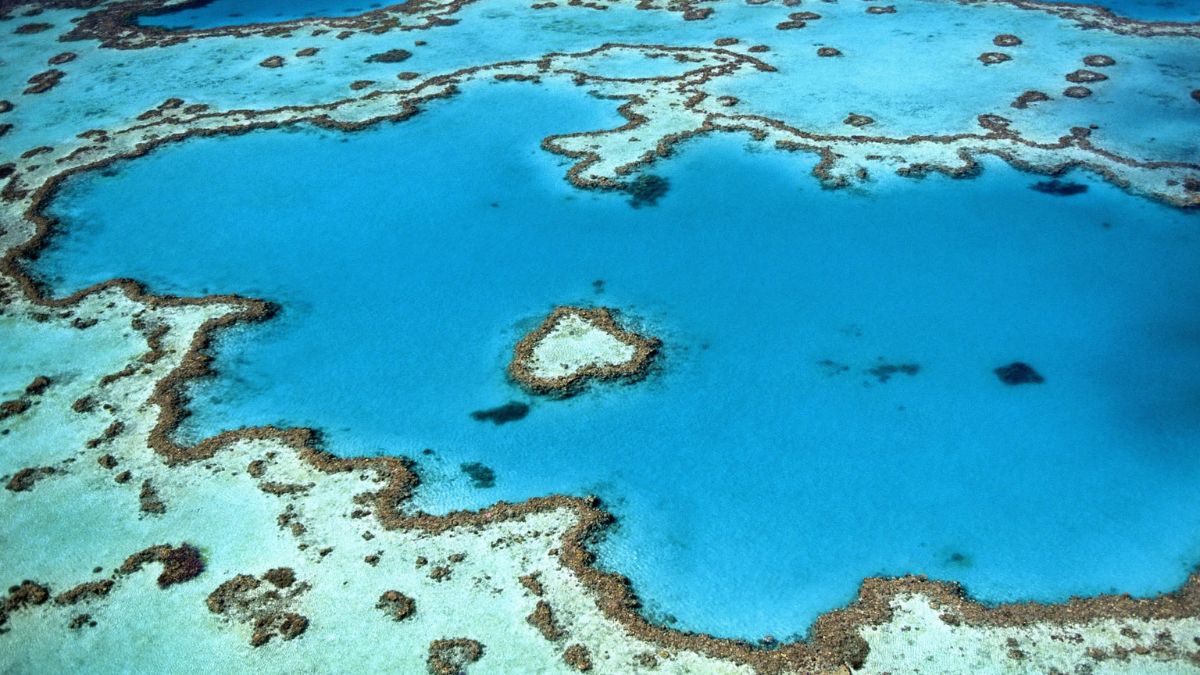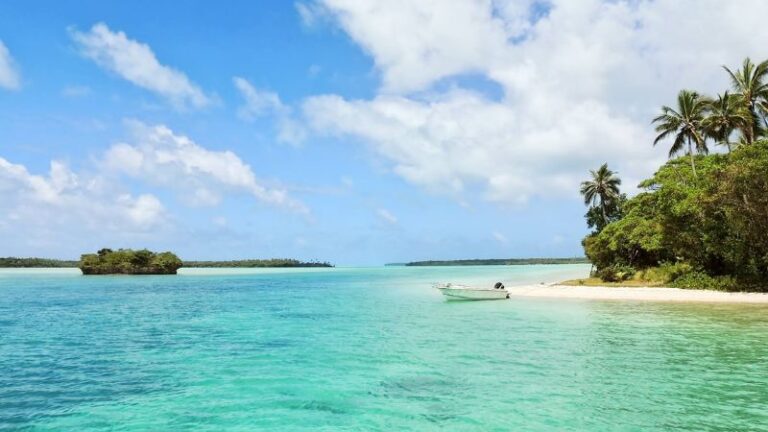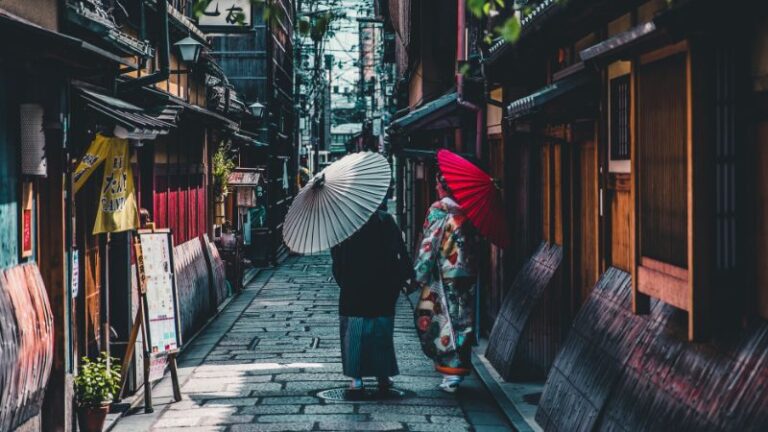Worst Time to Visit Great Barrier Reef: Navigating Stinger Season and Coral Spawning

As participants in Amazon Associates and other programs, we earn from qualifying purchases. This comes at no additional cost to you. For more details, see our Affiliate Disclosure.
Traveling to the Great Barrier Reef can be a magical experience; it’s a vibrant underwater world full of dazzling corals and colorful marine life. But not every season offers the same beauty and wonder. In fact, there are periods when your visit can turn less than ideal due to two major natural phenomena: the stinger season and the coral spawning.
Understanding these events can help you plan your visit wisely, ensuring the best possible experience in this marine wonderland so that you don’t visit Great Barrier Reef in the worst time.
Introduction to the Great Barrier Reef: More Than Just a Tourist Destination
The Great Barrier Reef, stretching over 2,300 kilometers along the northeastern coast of Australia, is more than just a must-see on every traveler’s bucket list. This remarkable coral reef system, the largest on Earth, is a sprawling undersea universe that houses an astounding variety of marine life. With more than 2,900 individual reefs, 600 types of hard and soft corals, and a multitude of fish, mollusks, and other ocean dwellers, it’s a vibrant ecosystem teeming with life and color.
But beyond its sheer beauty and allure as a tourist destination, the Great Barrier Reef plays a crucial role in the world’s environmental balance. It provides a habitat for many endangered species, aids in carbon absorption, and acts as a natural barrier protecting coastal areas from oceanic storms and waves. It’s a treasure not just for Australia, but for the whole planet, making its preservation a paramount global concern.
However, visiting this marine paradise requires thoughtful planning. Just like any other natural wonder, it has its seasonal challenges that could affect your experience. Among these are the stinger season and the coral spawning period – two natural phenomena unique to this part of the world. Understanding these events is key to navigating your journey, ensuring you get the most out of your visit to the Great Barrier Reef.
Understanding Stinger Season: What You Need to Know
Stinger season, occurring approximately between November and May, coincides with the warmer months in the Great Barrier Reef. During this time, the oceanic waters become home to a variety of jellyfish, including the potentially dangerous box jellyfish and Irukandji. These marine creatures are not only a nuisance but can also pose significant health risks due to their powerful and painful stings.
The box jellyfish, known scientifically as Chironex fleckeri, is particularly notorious. It’s one of the most venomous creatures on the planet, and its sting can be life-threatening. It has long, trailing tentacles covered with tiny, specialized cells known as cnidocytes that can deliver a potent neurotoxin upon contact.
Less common but still a concern is the Irukandji jellyfish. Much smaller than the box jellyfish and nearly transparent, they can be difficult to spot in the water. While their stings are typically not life-threatening, they can cause a collection of symptoms known as Irukandji syndrome, which can be quite severe, including muscle cramps, nausea, severe pain, and in some cases, cardiac issues.
During the stinger season, swimming without protection in certain parts of the Great Barrier Reef can be risky. Fortunately, precautions can be taken to safely enjoy the waters, even during this period.
The Impacts of Stinger Season on Your Visit
The presence of box jellyfish and Irukandji during stinger season significantly affects how visitors can interact with the Great Barrier Reef. While the risk varies across different parts of the Reef, with outer reefs generally being safer than inshore waters, it’s important to be prepared and informed about the potential hazards.
Most notably, swimming and snorkeling without protective clothing are highly discouraged during this period. The tentacles of these jellyfish can sting through bare skin, causing intense pain and, in severe cases, serious medical conditions. Therefore, most guided tours and local authorities recommend wearing ‘stinger suits’ – full body lycra suits that prevent jellyfish tentacles from making contact with the skin.
Moreover, some beach areas may be off-limits or have reduced access during this time. Lifeguards often put up stinger nets, which are designed to keep jellyfish away from swimming areas, but they are not 100% foolproof.
Despite these limitations, it’s important to note that the Great Barrier Reef remains open and can still be thoroughly enjoyed during the stinger season. Many tour operators continue to run diving and snorkeling trips, providing visitors with stinger suits and educating them about safety measures. Furthermore, the season does not affect all areas of the Reef equally, meaning there are still plenty of safe and wonderful places to explore.
The Mystery of Coral Spawning

Coral spawning is a fascinating and somewhat mysterious natural phenomenon that takes place in the Great Barrier Reef. It is essentially the coral equivalent of a mass breeding event, where colonies and species of coral release egg and sperm bundles into the water simultaneously.
What makes this event particularly intriguing is its synchronicity. Thousands of coral polyps across miles of reef simultaneously release their gametes in a coordinated effort. This mass spawning usually occurs at night and is a spectacular sight, with the ocean appearing to be filled with a snowstorm of pink and white particles.
The precise mechanisms that trigger coral spawning are still the subject of scientific research, but it is generally accepted that it’s influenced by a combination of factors such as water temperature, moon phase, and day length. In the Great Barrier Reef, it typically occurs once a year, over several nights after the full moon, in late spring to early summer (usually November or December).
Coral spawning is crucial for the survival and diversity of the reef ecosystem. The simultaneous release of eggs and sperm into the water increases the likelihood of fertilization and reduces the chance of individual gametes being eaten by predators. The resulting larvae, known as planulae, then drift with the currents before settling on the seabed to form new coral colonies, helping the reef to regenerate and grow.
Coral Spawning: Timing and Implications for Visitors
For visitors, the timing of coral spawning can have both pros and cons. On the positive side, witnessing this event is an extraordinary experience. The underwater spectacle can be breathtaking, and many diving and snorkeling tours aim to coincide with the estimated spawning dates, providing a rare chance to see this natural wonder up close. For researchers and marine life enthusiasts, this can be a highlight of their visit to the Great Barrier Reef.
However, there are also some challenges that visitors should be aware of. The exact dates of coral spawning can be difficult to predict, usually occurring about a week after the full moon in November or December. Changes in environmental conditions can shift the timing, making it tricky for tourists to plan their trip around this event.
Additionally, in the immediate aftermath of a coral spawning event, the water quality can temporarily decrease. The huge number of gametes released into the water can cause a sort of marine snowfall, reducing visibility for divers and snorkelers. The decomposing organic matter may also slightly alter the water’s smell and texture, and potentially attract more marine scavengers to the area.
Regardless, with a bit of planning and perhaps some luck, the coral spawning season can add an extra layer of fascination to a Great Barrier Reef visit. It is a grand display of nature’s wonders, illustrating the complex and delicate processes that allow the reef to thrive.
How to Plan Your Visit Around Stinger Season and Coral Spawning
Planning your visit to the Great Barrier Reef around stinger season and coral spawning involves understanding the timing of these phenomena and adjusting your activities accordingly.
- Identify Your Priorities: If you wish to avoid stinger season, plan your trip between June and October, which is typically outside the stinger season and offers excellent conditions for outdoor activities. If witnessing the spectacle of coral spawning is a priority, you should aim to visit around November or December, keeping in mind that exact timing can vary from year to year.
- Stay Informed: Always check with local authorities and tour operators for the latest information on stinger presence and predicted coral spawning dates. Local expertise is invaluable in these matters.
- Safety Precautions: During stinger season, always wear protective clothing when entering the water, such as a stinger suit, and follow any safety advice given by local authorities or tour guides.
- Activities: Even during stinger season or following a coral spawning event, there are still many activities to enjoy on the Great Barrier Reef. Apart from snorkeling or diving in safe areas, you can try sailing, island hopping, or even helicopter rides over the reef.
- Be Flexible: Weather and marine conditions can be unpredictable, so flexibility is key. Consider having alternative plans ready in case of unexpected changes, such as a shift in coral spawning dates or an increase in stinger presence.
By preparing in advance and staying informed, you can ensure a memorable trip to the Great Barrier Reef, irrespective of the time of year you choose to visit.
Safety Measures to Consider During Stinger Season and Coral Spawning
Taking safety measures during both stinger season and coral spawning can significantly enhance your visit to the Great Barrier Reef. Here are some important considerations:
Stinger Season
- Stinger Suits: Always wear a full-body stinger suit, which covers most of your skin and significantly reduces the risk of jellyfish stings. Most tour operators provide these suits.
- Avoidance: Avoid swimming in areas known to have a high presence of dangerous jellyfish. Stick to designated safe swimming areas, preferably those with stinger nets.
- First Aid: Familiarize yourself with first aid procedures for jellyfish stings. Immediate treatment typically involves dousing or rinsing the area with vinegar to neutralize the stinging cells, then seeking medical help.
Coral Spawning
- Visibility: After a coral spawning event, underwater visibility can be reduced due to the ‘marine snow’ of coral eggs and sperm. This can affect divers and snorkelers, so plan accordingly.
- Water Quality: The large volume of organic material in the water post-spawning can lead to temporary changes in water quality. If you notice a significant change, it might be best to avoid water activities for a few days.
- Marine Life Behavior: Coral spawning can affect the behavior of certain marine species, attracting more predators to the area. Be aware of any changes and listen to advice from local guides.
The Great Barrier Reef is a vast ecosystem, and conditions can vary greatly across different areas. Always stay informed and heed the advice of local authorities and experienced guides. Safety should always be your top priority when exploring this magnificent world heritage site.
Alternative Activities During the Less Ideal Times
Even during the less ideal periods of stinger season and post-coral spawning, there’s no shortage of alternative activities to enjoy in the Great Barrier Reef region. Here are a few options that can enhance your experience:
- Island Exploration: The Great Barrier Reef includes hundreds of islands, each with its unique charm. From the luxurious resorts of Hamilton Island to the untouched beauty of Fitzroy Island, there’s plenty to explore. Hiking, bird-watching, and relaxing on stunning beaches are just a few of the activities on offer.
- Helicopter or Seaplane Tours: For a different perspective of the reef, why not view it from above? Aerial tours offer a breathtaking overview of this sprawling ecosystem and provide opportunities for spectacular photography.
- Submersible Tours: Submarine and semi-submersible tours allow you to explore the underwater world without getting wet. These can be particularly good options during stinger season or when water visibility is reduced.
- Cultural Experiences: The Great Barrier Reef is home to rich Aboriginal and Torres Strait Islander heritage. Engage in cultural tours, learn about traditional land and sea custodianship, and experience indigenous art and performances.
- Aquariums and Research Centers: Visit local marine education centers, like the Reef HQ Aquarium in Townsville, to learn about reef conservation. Some centers also offer ‘meet the scientist’ sessions, providing insights into ongoing research and conservation efforts.
- Wildlife Encounters: The region is rich in wildlife, both in and out of the water. Look out for opportunities to spot native species like kangaroos, koalas, and a plethora of bird species.
- Relaxation and Wellness: Take advantage of the world-class resorts and wellness centers in the area. Indulge in spa treatments, yoga sessions, or simply relax by the pool with a good book.
- Culinary Experiences: Explore the local culinary scene. Queensland is renowned for its fresh seafood, tropical fruits, and fine wines.
Even if you’re not diving or snorkeling, the Great Barrier Reef offers a wealth of experiences, ensuring your visit will be memorable and rewarding.






